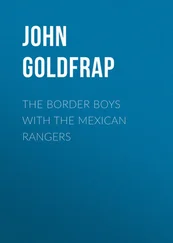John Wohlstetter - Sleepwalking with the Bomb
Здесь есть возможность читать онлайн «John Wohlstetter - Sleepwalking with the Bomb» весь текст электронной книги совершенно бесплатно (целиком полную версию без сокращений). В некоторых случаях можно слушать аудио, скачать через торрент в формате fb2 и присутствует краткое содержание. Город: Seattle, Год выпуска: 2012, ISBN: 2012, Издательство: Discovery Institute Press, Жанр: История, military, Политика, Публицистика, на английском языке. Описание произведения, (предисловие) а так же отзывы посетителей доступны на портале библиотеки ЛибКат.
- Название:Sleepwalking with the Bomb
- Автор:
- Издательство:Discovery Institute Press
- Жанр:
- Год:2012
- Город:Seattle
- ISBN:978-1-93659-906-6
- Рейтинг книги:3 / 5. Голосов: 1
-
Избранное:Добавить в избранное
- Отзывы:
-
Ваша оценка:
- 60
- 1
- 2
- 3
- 4
- 5
Sleepwalking with the Bomb: краткое содержание, описание и аннотация
Предлагаем к чтению аннотацию, описание, краткое содержание или предисловие (зависит от того, что написал сам автор книги «Sleepwalking with the Bomb»). Если вы не нашли необходимую информацию о книге — напишите в комментариях, мы постараемся отыскать её.
RICHARD PERLE, Resident Fellow, American Enterprise Institute and Assistant Secretary of Defense, 1981–1987 Sleepwalking with the Bomb
Sleepwalking with the Bomb — читать онлайн бесплатно полную книгу (весь текст) целиком
Ниже представлен текст книги, разбитый по страницам. Система сохранения места последней прочитанной страницы, позволяет с удобством читать онлайн бесплатно книгу «Sleepwalking with the Bomb», без необходимости каждый раз заново искать на чём Вы остановились. Поставьте закладку, и сможете в любой момент перейти на страницу, на которой закончили чтение.
Интервал:
Закладка:
Avoiding a Collision in the Pacific
CHINA’S BOMB total is not known—estimates range from the low 200s to the high 400s. Recent scholarship, however, suggests that China may have several times that many nuclear weapons. It has built an “Underground Great Wall,” an incredible 3,000 miles of huge tunnels through which mobile missiles are transported. And its huge military buildup in pursuit of dominance in the western Pacific would be far more formidable if joined with a large, modern nuclear arsenal.
The International Panel on Fissile Materials, a 16-country group comprising states with and without nuclear weapons, estimated in its 2011 report that China has 16 tons of weapons-grade uranium. According to nuclear proliferation expert Henry Sokolski, that is enough to make 1,000 first-generation uranium bombs and 3,000 advanced-design uranium bombs. China also is believed to possess an estimated 1.8 tons of plutonium—enough to make 450 crude plutonium bombs and 900 advanced plutonium bombs. [23] As explained below, a “bomb” is either a military “weapon” or a terrorist “device.”
Sokolski points out that U.S. intelligence estimates of 240 Chinese nuclear warheads make four questionable assumptions: 1. no missile reloads, 2. no tactical nuclear weapons, 3. no nuclear-armed cruise missiles, and 4. all warheads are high-yield thermonuclear weapons. These assumptions run contrary to Russian and U.S. force deployments. Both Russia and the U.S. have deployed tactical nuclear weapons, nuclear-armed cruise missiles, and warheads across a range of low to high yields. Russia has long deployed silo reload capabilities for its land-based missiles.
These factors, and their implications, seem to have escaped the Obama administration, which aims to “set an example” for other nations by reducing the number of U.S. weapons. Lost in the fog of this thinking is that the fewer weapons the U.S. retains, the greater incentive China has to increase its arsenal. Far from setting an example, a shrinking stockpile of American weapons increases the payoff of each bomb deployed by a rival power seeking to displace American influence, or by an enemy power seeking to destroy America outright. In a strategic environment where America has 10,000 nuclear weapons, whether China has 100, or 500—or even 1,000—probably counts for little. A China armed with far fewer nuclear weapons than America is less likely to risk a major confrontation over Taiwanese independence, or intervene in a second full-scale Korean war.
But suppose—as “minimum deterrence” proponents advocate—the U.S. was to go down to, say, 300 weapons—the number floated as an option by the Obama administration. China’s weapons would instantly become more valuable on the strategic chessboard. A China armed with 1,000 nuclear weapons facing an America with only 300 would likely act far more boldly—and much more boldly if the U.S. were to go all the way to nuclear zero. Even a China having nuclear parity with the United States would be tempted to act more boldly in a crisis than it is prepared to do today.
History supports this view. During the Cuban Missile Crisis the U.S. had 2,962 deliverable nuclear bombs and warheads on 15-minute alert status, dwarfing Russia’s arsenal. Khrushchev was bluffing, and the Americans knew it. During the diplomatic negotiations after the crisis, Soviet special envoy Vasily V. Kuznetsov told his American counterpart, John J. McCloy: “You will never do this to us again.” He meant that Washington would never again have the overwhelming nuclear superiority to force Moscow to back down. But that nuclear balance was to change by the time of the next big crisis.
The 1973 U.S.-Soviet confrontation during the Yom Kippur War offers an even closer historical parallel than the Cuban Missile Crisis to a possible future collision between the U.S. and China in the western Pacific.
Egyptian leader Anwar Sadat ordered his troops to invade the Israeli-occupied Sinai Desert on October 6, 1973, the Jewish Day of Atonement. Israeli leaders declined to mobilize despite signs of preparation for war, never imagining that Egypt would choose the holiest day of the Jewish calendar to launch its attack. As Egyptian troops breached Israel’s southwestern defensive lines at the Suez Canal and sped across the Sinai Peninsula on Yom Kippur, Syria struck Israel’s northeast, the rocky farmland of the Golan Heights. Israel hastily rushed troops to both fronts, but a country with little geographic strategic depth had to initially yield ground it could hardly afford to cede. The war turned around when Israeli general Ariel Sharon—in a move reminiscent of maneuvers by General George S. Patton—crossed the Suez Canal and encircled Egyptian troops.
At this point the Soviet Union began playing aggressive diplomatic and military cards. It had only been in 1972 that Sadat, in a surprise move, had expelled the Soviets from Egypt, and the Soviets saw the war as an opportunity to retrieve their geopolitical position in the Mideast as superpower sponsor of all radical Arab powers. They therefore sought to airlift Soviet commandos into the region. [24] In their 2007 book Foxbats Over Dimona: The Soviets’ Nuclear Gamble in the Six-Day War, authors Isabella Ginor and Gideon Remez offer evidence that during the June 1967 conflict the Soviets planned to invade Israel and bomb Israel’s nuclear reactor at Dimona, where Israel makes nuclear fuel for its weapons. But Israel’s rapid destruction of Egyptian, Syrian, and Jordanian forces preempted Soviet plans. The Soviets moved faster in 1973, so it took a U.S. threat to stop them.
Oil-supply leverage became a major factor in responses to the conflict. To punish the U.S. and divide it from its pro-Arab allies, the Saudis declared an oil embargo. Only Portugal permitted American planes to land (on the Azores) and only Greece and Italy offered port facilities to the U.S. Navy. The remaining European allies even refused overflights of U.S. military planes. Worse, NATO member Turkey allowed Russian planes to overfly supplies en route to the Mideast.
The Russians had narrowed most of the yawning numerical gap between their nuclear forces and America’s, and perhaps their senior commanders were thinking of Kuznetsov’s promise during the post–Missile Crisis diplomatic negotiations. In the Mediterranean, Soviet ships confronted American ships—including, in an historical irony, the nuclear-powered aircraft carrier John F. Kennedy —while the war approached its climax on land.
The U.S. Sixth Fleet and the Soviet Mediterranean Fleet were in close proximity, the Soviets shadowing the U.S. Sixth Fleet with more ships than usual for several days. Admiral Daniel Murphy sent a message to headquarters at the end of one tense day: “Both fleets were obviously in a high readiness posture for whatever might come next, although it appeared that neither fleet knew exactly what that meant.”
The American goal was, in significant part, to keep Soviet troops out of the Mideast, thus limiting Soviet influence in the region. Soviet leader Leonid Brezhnev proposed a joint U.S.-Soviet deployment to share the policing of cease fire lines, and in an urgent letter warned President Nixon: “In the event that the U.S. rejects this proposal, we should have to consider unilateral actions.”
The situation was serious enough for President Nixon to put U.S. forces on DEFCON 3 alert status shortly after he received Brezhnev’s harsh note. (DEFCON—defense condition—3 is a midrange alert status, with DEFCON 1 meaning imminent war; DEFCON 2 was declared for the Strategic Air Command during the Cuban Missile Crisis, the highest alert level since the system was inaugurated in 1959.) “You know we were close to a nuclear confrontation this morning,” President Nixon told Henry Kissinger (then serving as both National Security Adviser and Secretary of State), late on October 25, 1973, the day that the cease fire went into effect.
Читать дальшеИнтервал:
Закладка:
Похожие книги на «Sleepwalking with the Bomb»
Представляем Вашему вниманию похожие книги на «Sleepwalking with the Bomb» списком для выбора. Мы отобрали схожую по названию и смыслу литературу в надежде предоставить читателям больше вариантов отыскать новые, интересные, ещё непрочитанные произведения.
Обсуждение, отзывы о книге «Sleepwalking with the Bomb» и просто собственные мнения читателей. Оставьте ваши комментарии, напишите, что Вы думаете о произведении, его смысле или главных героях. Укажите что конкретно понравилось, а что нет, и почему Вы так считаете.












